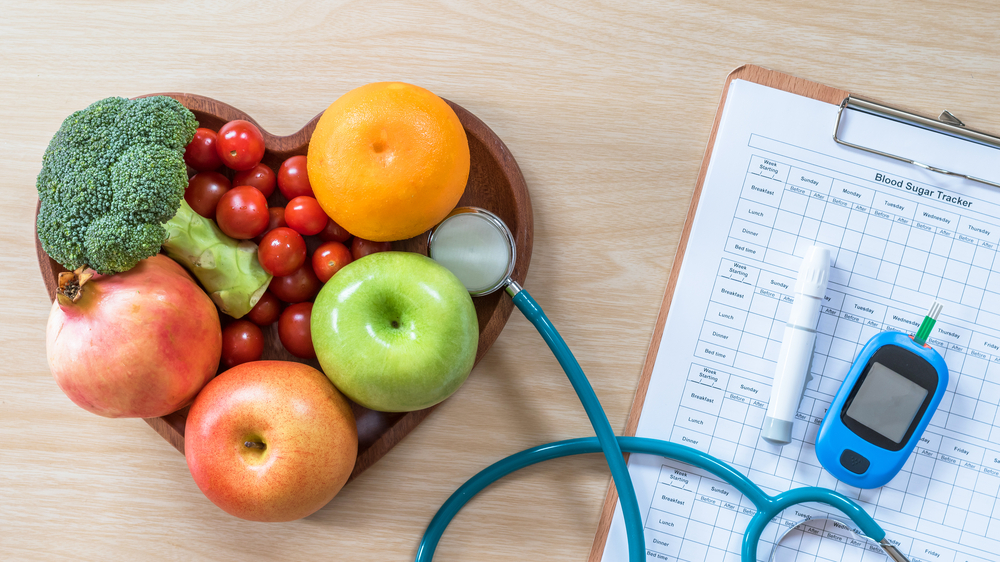
Diabetes is the most common hormonal disorder affecting adults worldwide. It is also one of the top ten causes of death in adults. In 2006, it was the seventh leading cause of death listed on U.S. death certificates. People with diabetes are at an increased risk of developing heart disease, stroke, kidney disorder, blindness and nervous system disease. However, through years of research, experts have shown that lifestyle modification and chronic management plans can go a long way in diabetes prevention because the disease has strong links to diet and activity.
Here Are Some Questions That You might Have About Diabetes
डायबिटीज क्या है?
Diabetes is a disease characterized by the body’s inability to use glucose for growth and energy. Normally, the glucose produced from the breakdown of food gets absorbed into our blood. It then must enter the cells in order to be utilized by the body. This process requires insulin, a hormone produced by a gland called the Pancreas. In people with Diabetes, either enough insulin is not produced, or the insulin that is present is unable to work adequately. As a result, too much glucose builds up in the blood, raising the blood sugar level. Persistently high blood sugar has a damaging effect on several organs of the body leading to complications of Diabetes.
डायबिटीज के प्रकार क्या हैं?
Depending on the underlying cause, Diabetes is classified into various types.
- Type 1 Diabetes:Also known as juvenile Diabetes or Insulin Dependent Diabetes Mellitus or IDDM. It occurs when the body’s own immune system destroys the insulin producing cells in the Pancreas. Type 1 Diabetes is a relatively uncommon condition, accounting for less than 10% cases of Diabetes. In most cases, it is diagnosed before 30 years of age. Unfortunately, it is not preventable, though people diagnosed with it can lead a normal life by taking regular insulin injections.
- Type 2 Diabetes:Also known as adult onset or noninsulin dependent Diabetes or NIDDM. It is the more common form of Diabetes accounting for 90% cases of Diabetes. People with Type 2 Diabetes have adequate insulin, but their cells cannot use it, a condition called insulin resistance. It usually occurs in adults over 35 years old, but can affect anyone, including children. It’s a lifestyle disease related to obesity, physical inactivity, and age and to some extent the family history.
Besides these two forms there are some other less common types of Diabetes. One of them is gestational Diabetes, a condition that affects about 4 percent of all pregnant women. It usually appears during the second trimester and disappears after the birth of the baby.
How Is Diabetes Diagnosed?
Diabetes can be diagnosed by measuring your blood sugar level. By definition, Diabetes is having a plasma glucose level of 126 mg/dL or more after an overnight fast (also known as fasting plasma glucose or FPG test), or having a non-fasting glucose level greater than or equal to 200 mg/dL (also known as random plasma glucose test), or an A1C greater than or equal to 6.5% Diabetes must be confirmed by meeting at least two of these test criteria, or by repeating one of these tests on a different day.
What Is Pre-Diabetes?
PreDiabetes is a condition in which FPG levels are higher than normal but not high enough to be diagnosed as Diabetes (100- 125 mg/ dL). The condition is also called as impaired fasting glucose(IFG). PreDiabetes can also be diagnosed by a more sensitive test called the oral glucose tolerance test(OGTT). People with pre-diabetes are at a high risk of developing type 2 Diabetes. Moreover long term damage to their heart and blood vessels may already have started. PreDiabetes means a 50% higher risk of heart disease and stroke compared to someone with normal FPG. PreDiabetes is increasingly becoming common. According to recent estimates, one in four adults over 20 years in the USA has preDiabetes. The good news is that clinical trials have shown that adults with preDiabetes can prevent or delay the onset of type 2 Diabetes if they follow the right diet and exercise. Spend some time understanding the types of diabetes for more knowledge.
डायबिटीज के लक्षण क्या हैं?
Very often type 2 Diabetes produces no symptoms or a very gradual appearance of symptoms. Common symptoms include:
- Increased thirst
- Increased hunger (especially after eating)
- मुंह सूखना
- बार बार पेशाब आना
- Unexplained weight loss(even though you are eating well and feel hungry)
- Fatigue (weak, tired feeling)
- नजर धुंधलाना
- Loss of consciousness(rare)
The symptoms of type 1 Diabetes may be the same as those listed above but may have a sudden onset. Other symptoms of type 2 Diabetes include slow-healing sores or cuts, itching of the skin, frequnet yeast infections. recent weight gain, numbness or tingling of the hands and feet, impotence or erectile dysfunction.
Find Out Your Diabetes Risk
Anyone can get type 2 Diabetes. However, the latest research shows that the risk of getting type 2 Diabetes is higher in people who have the following risk factors.
- प्रिडायबिटीज
- Family history of Diabetes (parent or sibling with Diabetes)
- People who are overweight
- People who do not exercise regularly
- HDL (“good”) cholesterol levels under 35 mg/dL and/or a triglyceride level over 250 mg/dL
- हाई ब्लड प्रेशर
- Age over 45
- Certain racial and ethnic groups (e.g. Asians, Asian Americans etc.)
- Women who had gestational Diabetes
How Can I Manage My Diabetes Risk?
Type 1 Diabetes can’t be prevented, but type 2 Diabetes has modifiable risk factors which can be managed to lower your risk. Even people with pre-Diabetes can substantially lower their risk of developing Diabetes by making changes in their diet and increasing their level of physical activity. They may even be able to return their blood glucose levels to the normal range. In a large research study called the Diabetes Prevention Program (DPP) done among people with pre Diabetes, the following lifestyle changes reduced the development of Diabetes over three years by 58%.
-
- Weight Control:Being overweight or obese is the single most important risk factor. Even losing 5% to 10% of excess body weight will help reduce your risk.
- Exercise:Moderate exercise for 30 minutes a day, such as cycling, swimming, or brisk walking, helps prevent Diabetes. Aerobic exercise is ideal for losing weight and preventing pre Diabetes from turning into type 2 Diabetes. Weight reduction and exercise are helpful because they increase the body’s ability to use insulin.
- Diet:A low fat, high fiber diet prevents Diabetes, with or without weight loss. A diet that is high in fruits and vegetables and low in saturated fats also helps to reduce the overall cardiovascular risk. Indian dishes containing rava and chana dal are good for diabetes.
In addition, people with preDiabetes or other Diabetes risk factors must manage other cardiovascular risk factors. These include:
- Controlling blood pressure
- Controlling blood cholesterol
- धूम्रपान छोड़ना
A prescription drug called Metformin has also been shown to prevent the development of Diabetes in people with pre-diabetes. However, weight loss, diet modification and exercise are more effective at reducing the risk compared to Metformin.
I Have No Symptoms, Should I Still Get Tested?
Absolutely. PreDiabetes does not usually produce any symptoms. Even Diabetes remains undetected in millions of people because symptoms develop so gradually that people often don’t recognize them. Some people have no symptoms at all. Many doctors recommend screening for type 2 Diabetes at age 30 among people at risk, such as those who are overweight or those with a family history of Diabetes. Those more than 45 years of age should get tested irrespective of other risk factors.
How Often Should I Get Tested?
If you have pre-diabetes, you should be checked for type 2 Diabetes every 1-2 years after your diagnosis. If your blood glucose levels are in the normal range, you should get it checked every 3 years.
Visit our Health Tips Blog section to gain more knowledge about chronic illnesses and their prevention
(This article first appeared on HealthCare Magic and is authored by Dr. Yogesh D, https://www.healthcaremagic.com/articles/ABC-of-Diabetes/8078)





 1800-270-7000
1800-270-7000










I appreciate this work amazing post for us I like it.
Good Article.Diabetes is a body condition and if addressed from an early stage, can be managed well. Do not give way to sugar in your blood that reaches a level where it gets fatal for your body parts.Keep monitoring your sugar level and adopt a healthy lifestyle to see the difference.